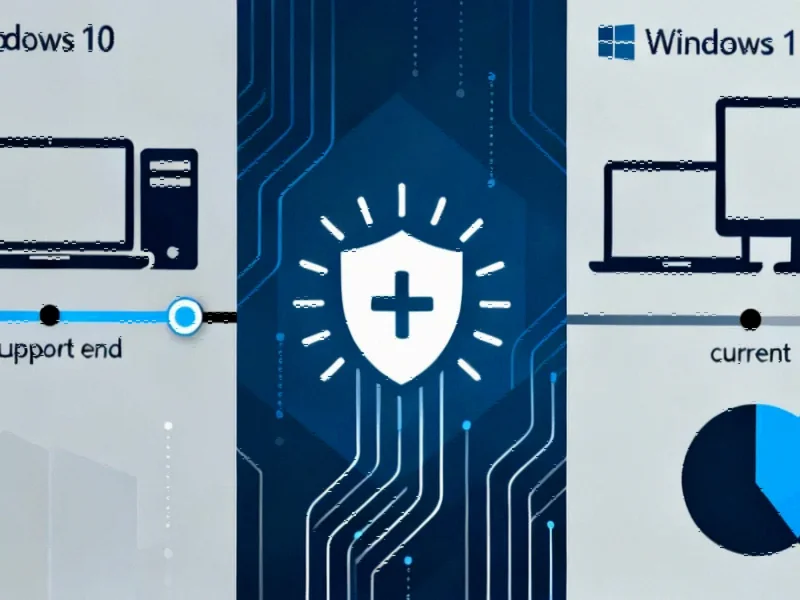According to DCD, Sidus Space has finalized its Commercial Pathfinder Mission Agreement with Lonestar Data Holdings for the design, development, and integration of edge processing digital data storage payloads into LizzieSat-5 low-Earth orbit satellites. The mission builds on an existing $120 million agreement between the companies to develop lunar data storage spacecraft, with Sidus maintaining operational control through launch and early orbit phases at LEO altitudes of 500-550km. Carol Craig, founder and CEO of Sidus Space, emphasized that the partnership demonstrates how modular satellite design can rapidly advance commercial space innovation while enabling new applications for edge computing in orbit. This development comes amid growing interest in orbital data processing, highlighted by Jeff Bezos’ recent comments about potential orbital data centers at Italian Tech Week 2025. The strategic implications of this partnership extend far beyond the immediate mission parameters.
The Emerging Orbital Data Infrastructure Market
The Sidus-Lonestar partnership represents a calculated bet on what could become a multi-billion dollar market for orbital data services. While terrestrial data centers face increasing challenges with energy costs, real estate limitations, and environmental regulations, orbital facilities offer potential advantages in renewable energy access and natural cooling. However, the business case remains unproven, and early movers like Lonestar are essentially creating a market that doesn’t yet exist. The Sidus Space constellation approach suggests they’re pursuing a distributed architecture rather than the massive centralized facilities Bezos envisioned, which could prove more immediately feasible given current technological constraints.
The Hard Realities of Space-Based Computing
While the vision of orbital data centers captures imagination, the technical hurdles remain substantial. The notion of 24/7 solar power in LEO is misleading—satellites experience regular eclipse periods when they pass through Earth’s shadow, requiring sophisticated power management and energy storage systems. Thermal management presents even greater challenges, with processors cycling between extreme temperatures that can degrade performance and reliability. The radiation environment in LEO also threatens data integrity and hardware longevity, necessitating extensive radiation hardening and error correction protocols that add cost and complexity. These factors collectively make the cost-per-compute-hour equation significantly different from terrestrial alternatives.
Shifting Competitive Dynamics in Space Services
This agreement signals a strategic pivot for both companies toward higher-margin space services rather than pure satellite manufacturing or launch services. For Sidus Space, hosting third-party payloads represents a recurring revenue stream that could stabilize their business model beyond one-off satellite sales. For Lonestar, they’re positioning themselves as pioneers in a niche that larger cloud providers haven’t yet prioritized, potentially establishing first-mover advantage in sovereign orbital data storage. The timing is strategic—as companies increasingly seek data sovereignty solutions and disaster recovery options beyond terrestrial jurisdiction, orbital data centers could fill a critical gap in the global data infrastructure ecosystem.
The Uncharted Regulatory Environment
Orbital data infrastructure exists in a legal gray area that could either accelerate or hinder its development. Data stored in orbit falls outside traditional national jurisdictions, creating both opportunities and challenges. While this offers potential protection from certain terrestrial legal actions, it also raises questions about compliance with data protection regulations like GDPR, which have extraterritorial applications. The cybersecurity implications are equally complex—consolidating valuable data in orbital facilities creates attractive targets for both terrestrial and space-based threats. The industry will need to develop new security protocols and potentially even space-based incident response capabilities as this market matures.
Strategic Implications for Space Investors
For investors watching the commercial space sector, partnerships like this signal a maturation beyond basic satellite communications and Earth observation. The move toward orbital data services represents a second-wave opportunity in space commercialization, where the infrastructure itself becomes the product rather than just supporting other services. However, the capital intensity and technological risk remain high, and the timeline to profitability is likely measured in years rather than quarters. Success will depend not just on technological execution but on convincing enterprise customers that orbital data storage offers compelling advantages over terrestrial alternatives or other emerging solutions like underwater data centers.




